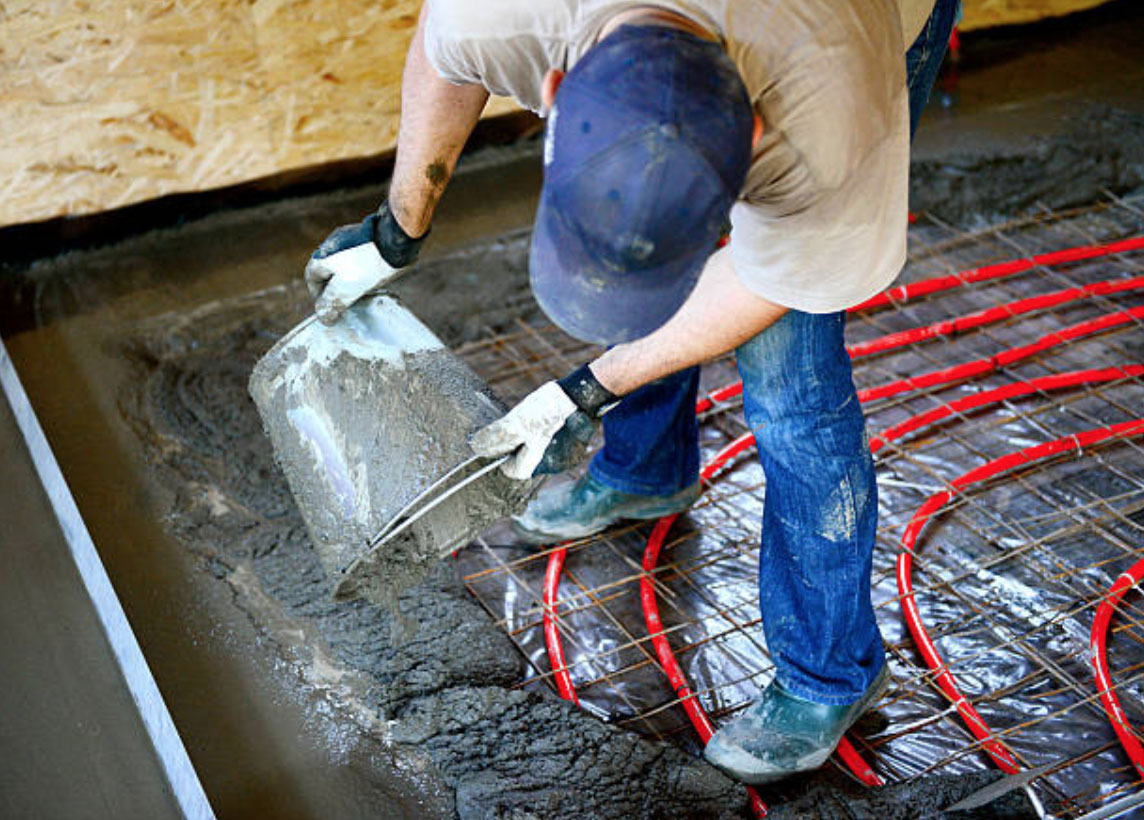How Do Hydronic (Water) Heating Systems Work?
A Hydronic Heating System warms a room by passing hot water through a series of pipes located within the floor, or through fixed radiators located within the rooms to be heated. The water is heated by a boiler, generally remotely located in a services area of the home. These boilers can either be powered by gas or electricity. Gas systems are the most popular due to their lower running costs.
How Do Electric Floor Heating Systems Work?
An Electric Floorheating System consists of electric cable elements being installed within the floor. Once power is applied to these cables, the floor is then heated, radiating a gentle warmth to the room.
These systems can range in size from as little as 1 square metre to several hundred square metres in size. These days, most floor heating systems are controlled by “smart controllers” which are capable of scheduling times and temperatures to minimise costs to run and provide maximum comfort to the homeowner.
Advantages And Disadvantages Of Hydronic And Electric Heating Systems
The benefits far outweigh any drawbacks for both of these types of floor heating. Here are some positives and negatives to consider:
Advantages
1) No forced air movement avoids dust circulation within the home
2) A lovely warmth emitting from the floor creates a gentle rising of the room temperature
3) Excellent retention of warmth within the home
4) Silent operation
Disadvantages
1) Warmth in the room is not instant, unlike many other forced air systems
2) Water heating systems can be expensive to install
3) Floorheating can be more expensive to fit than other types of heating
4) Higher cost per square metre for larger areas
When To Install Hydronic Floor heating
Whilst both types of heating will give a similar end result, it is important to consider which is right for you and your home. If for example you have a large living area to heat (over 100 square metres), and you have access to a natural gas supply, hydronic heating would definitely be a consideration.
Smaller areas such as bathrooms and laundries, would be too small and not cost effective to heat in this way.
When To Install Electric Floor Heating
One major advantage of installing electric floor heating is the ability to increase or decrease temperatures at different times throughout the day or night.
This is a major benefit of these types of systems. For example, at Customheat we have a program set in our controllers that ramps up the floor temperatures in the morning and evening, then lowers temperatures over night to provide maximum warmth when you need it. This also has a huge impact in minimising running costs.
As you can install a complete system in as little space as 1 square metre, it is ideal for bathroom and laundry installations. If you have a bathroom and adjoining WC separated by a common wall, you can instal 2 heating mats connected to 1 wall controller, mounted on the common wall.[/vc_column_text]

